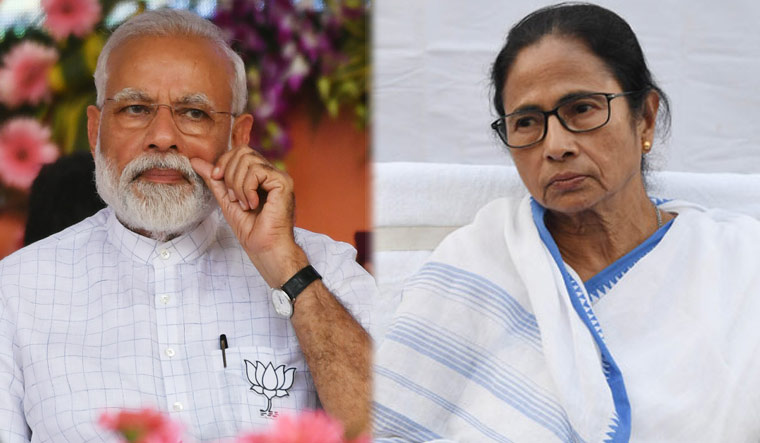As the eight phase West Bengal Assembly elections draw closer, the battle for the precious women votebank also starts to heat up, after all, with over 48 per cent share in the voting percentage, women can be the decisive factor in who forms the government. Mamata Banerjee, also referred to as ‘Didi’ in the state, is the only remaining women CM in the country and she is actively hedging her fortunes on the women of Bengal to bail her out from the BJP wave that is set to wipe out TMC. Surely, Mamata has a way amongst the women in her state but she is up against a leader named Narendra Modi who has uplifted millions of ordinary women around the country from their miseries to a life of stability. Therefore, the contest is expected to go right down to the wire with the latter expected to pip Mamata.
Out of the 294 seats in the state, Mamata’s TMC has given tickets to 50 women candidates which is 17 percent more than the 45 candidates the party fielded in 2016. TMC had also fielded 41 per cent women candidates in 2019’s Lok Sabha election.
To take the fight to BJP — TMC has given tickets to Sujata Khan, whose father and MP Saumitra Khan left TMC to join the BJP flanks. Similarly, another former TMC minister turned BJP leader turned independent Sovan Chatterji’s wife Ratna Chatterji has been given a ticket by TMC.
Historically, Mamata has done well in the state or LS elections whenever the female voters have turned out to vote. In 2011, when Mamata first came to power in Bengal, women had outvoted the men in voting share percentage. 85 percent women had voted compared to 84 percent men. Similarly in 2016, 83 percent women had voted as opposed to 82 percent men.
Thus from the recently announced slogan, “Bangla Nijer Meyeke Chai” (Bengal wants its own daughter) to accusing the BJP of insulting Maa Durga and Maa Sita and pushing the state government’s schemes for women, Mamata is turning the screws to tap this potentially game changing demography of voters.
The biggest evidence of women votebank turning the elections in a party’s favour was evident in the last Bihar assembly elections when the BJP led NDA came back from behind after struggling in the first two phases of the election — on the back of the women participation in the electoral process.
In the first phase, with just 54.4 per cent of the women turning up, the NDA took a beating. However the alliance performed well in the second and third phase where the women turnout was 58.8 and 65.5 per cent respectively.
After winning the Bihar polls, PM Modi thanked the women in the state, who he referred to as the “silent” voters. “I’m hearing a lot in the media about the ‘silent voter’. Now you can hear their echo. BJP has a bank of such silent voters who are voting for it time after time. These are the women voters of the country. They are our nari shakti (women power). From rural to urban, women have become the largest group of silent voters for us,” PM Modi had said.
Schemes such as Ujjwala Yojana, Jan Dhan, Swacch Bharat and myriad others have played right into the hands of BJP which has managed to turn the women voters into its core votebank Similarly, undertaking social causes by removing the archaic Triple Talaq law has majorly helped the Modi government in gaining a place amongst the Muslim women of the country.
To further lock its female voters, BJP has already deployed its women leaders like Locket Chatterjee, Bharti Ghosh, Debasree Chaudhuri and Agnimitra Paul for women voters’ mobilisation. The party’s confidence also grew when women took the lead in protesting, with a jhadu (broom), the irregularities in the state government’s Amphan relief distribution earlier this year.
The first phase of assembly election will begin on March 27 and both BJP and TMC are gunning for a shot at victory. However, the colossal popularity of PM Modi amongst the women is expected to be the decisive factor which could result in a big BJP sweep in Bengal.
